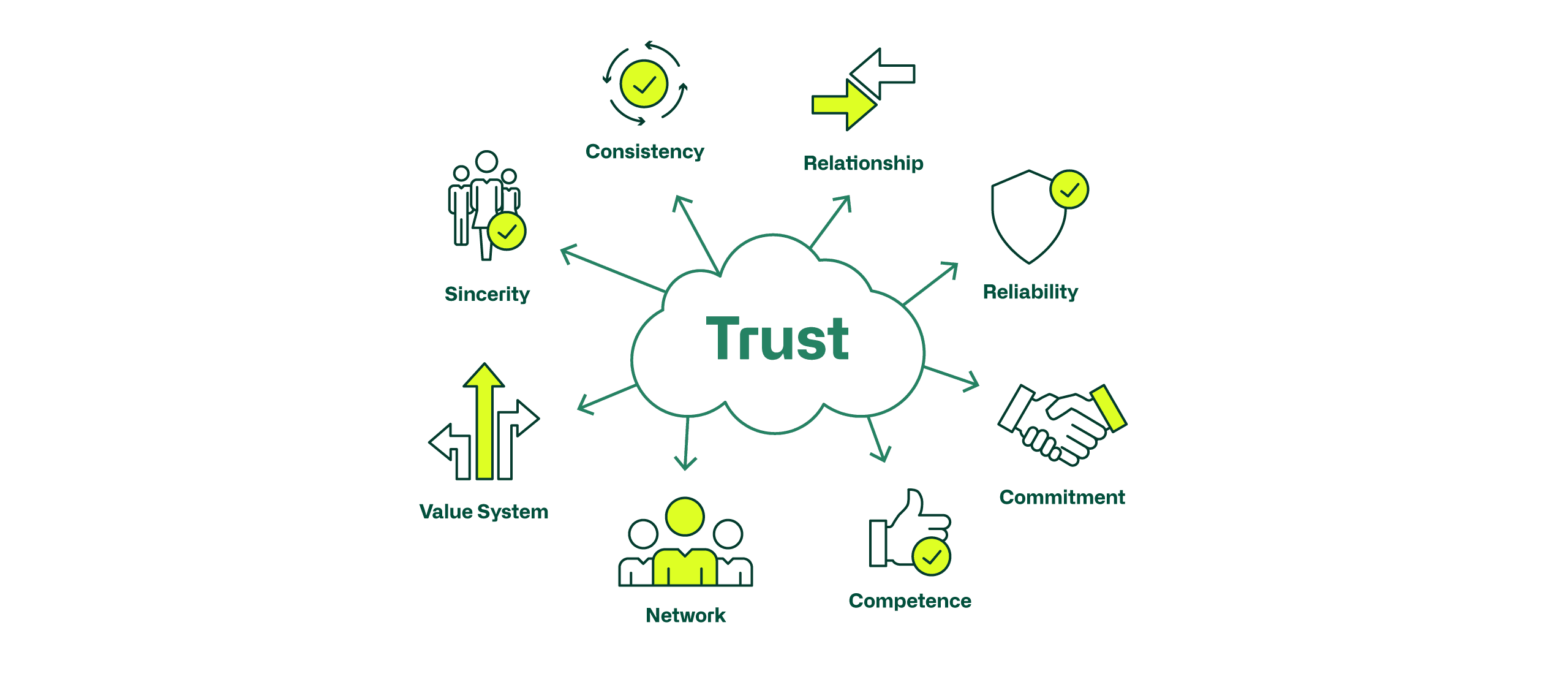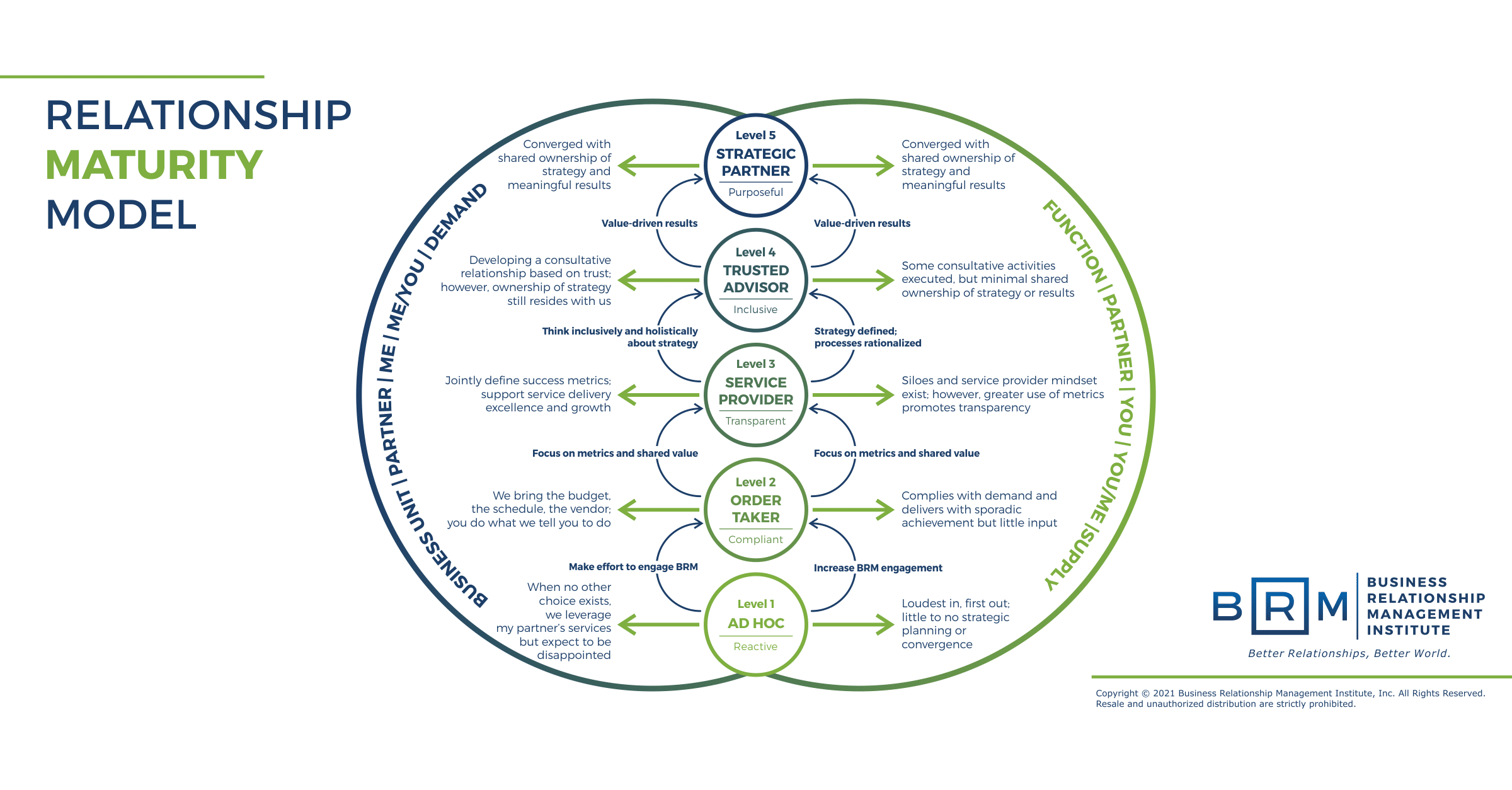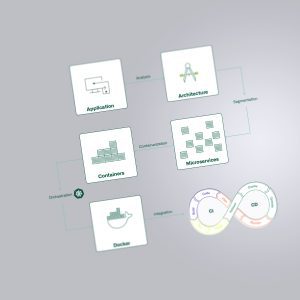Blog
The path to a successful partnership between business and IT
Trust as a critical success factor
Does it have to be the goal of IT to be perceived as a strategic partner or is it enough to position itself as a service provider within the company?
The answer first of all - no, the high differentiation requirements from the market for a company also require an active and formative role for IT in the company with discussions at eye level. This means that many IT departments need to redefine and reposition themselves. It is no longer enough to simply act as an "order taker" and be perceived within the company. Repositioning is a complex and time-consuming undertaking, as there are still major changes on the horizon due to digitalization, cloud transitions and AI innovations, which are demanding most of IT's resources and capacities.
But how do you make the transition from "order taker" to "strategic partner" in the current situation?
The solution is actually obvious - create trust in the business!
The good news is that creating a culture of trust is not necessarily extra work, but is built on consistent work such as:
- Do things the right way!
- Less is more!
- Make reliable statements!
- Align expectations!
- Continuous and open communication
- Having the courage to make decisions and taking responsibility for them

In our experience, the first step should be to focus on a selection of attributes that will create and strengthen the basis for mutual trust within the company.
The success of a company has long been dependent on functioning, efficient and effective IT services. The goals and successes must be jointly aligned with the company's success. The relationship and position of trust between the business and IT is crucial for joint success. This means a common strategy, goals, values and uniform management. Ultimately, successes and failures are shared. As partners, we are all in the same boat!
As long as corporate IT positions itself and sees itself as a service provider for the business, nothing will change in terms of the client vs. service provider hierarchy.
Experience shows that this is a process that requires a gradual approach and a rethink within the company.
"I personally like to compare this in the context of a mountain climber, who has the necessary expertise thanks to his training and corresponding practical experience. This competence enables him to bring his customers safely and securely up the mountain and back down again.
He has an eye for the important details, such as the weather, the nature of the route, the dangers and risks involved. He is aware of his responsibility for the whole group.
He has the necessary personality to meet them where they are and give them the feeling and security that the summit is an achievable goal.
In a company, business can be the mountain guide one day, and IT the next, but the important thing is that no matter what position you are in, mutual trust and respect for all parties play a crucial role"
Jessica Knecht, Consultant
What is a proven approach?
The Business Relationship Maturity Model can be used for various purposes, on the one hand to determine the maturity level of a company or to define a strategy for the future orientation of business and IT.

Level of the BRM model:
Level 1 - Ad Hoc:
At this stage of maturity, requests from the business are usually not approached and processed in a structured manner and therefore do not follow clear processes and structures.
Level 2 - Order Taker:
Requests are already being received and processed by the business in a more structured way, and work is underway to improve and prioritize important services.
Level 3 - Service Provider:
A routine creeps into the processing of services, there are fixed processes that are followed and a certain level of efficiency is already implemented, but innovation falls by the wayside. The costs are transparent, but the added value that is generated is still more of a subjective perception.
Level 4 - Trusted Advisor:
The processes are known and well implemented in the company. There is a mutual relationship of trust, the services are now aligned with the company's goals and a shared added value is achieved, which also means a willingness to make investments.
Level 5 - Strategic Partner:
Common goals, risks and quality standards are defined. The company's goals are tackled together and driven forward hand in hand; the "service provider" is now seen as an integral part of the company and an important decision-maker.
What is important in the methodology of the Business Relationship Maturity Model is that there is no predefined start and end point in the model; you start with one of the most important practices "Start where you are". The current maturity level of relationships and processes can be determined impartially by means of interviews, assessments and surveys.
Each level of BRM represents a certain degree of trust and collaboration, as well as the value and impact that this collaboration generates between the various stakeholders. The type of relationship - external or internal, operational or strategic - is irrelevant.
First, the criteria (feedback, communication, innovation, etc.) of the individual levels are defined, which forms the basis for evaluation.
This in turn forms the basis and starting point for all further steps, comparing the current level with the target level in order to implement and drive forward strategic improvement opportunities, of course always taking into account a timetable to measure the results at fixed intervals.
Conclusion
The question can now be asked, what level of maturity must be the main goal of the IT department nowadays, is it to be a strategic partner or is it not enough to simply be perceived as a trusted advisor?
It is undisputed that IT plays an essential role in every company, regardless of its maturity level, because digitalization, artificial intelligence or the cloud cannot be implemented without IT, and its contribution is therefore an essential part of the success of every company.
How can atrete help?
We help you to successfully implement your vision of a partnership between business and IT.




